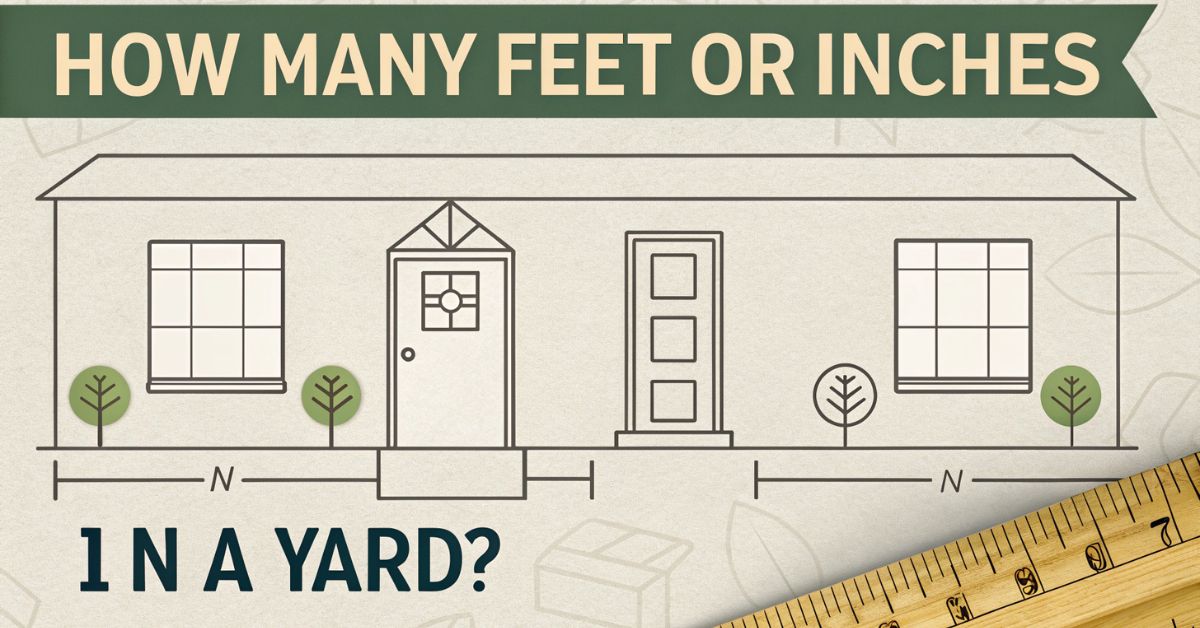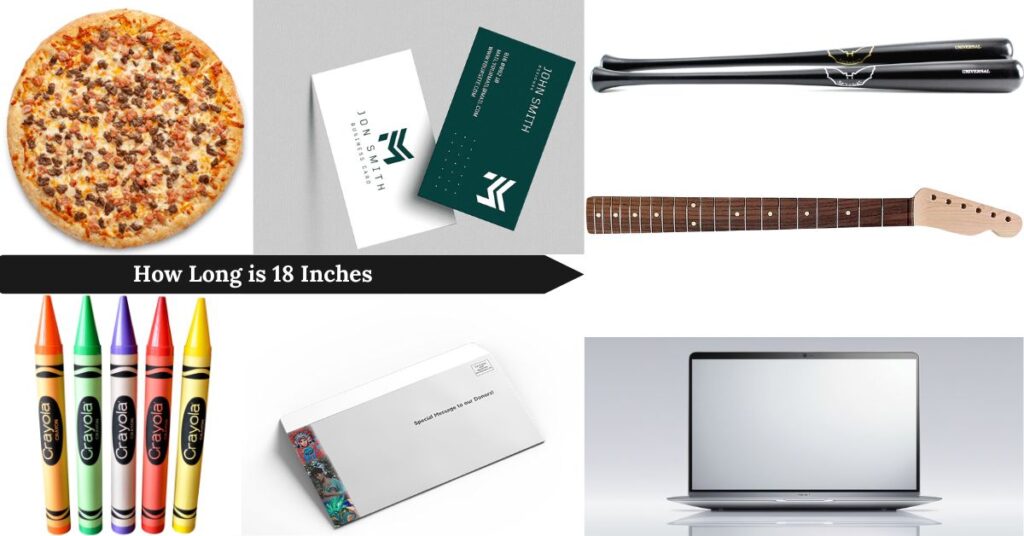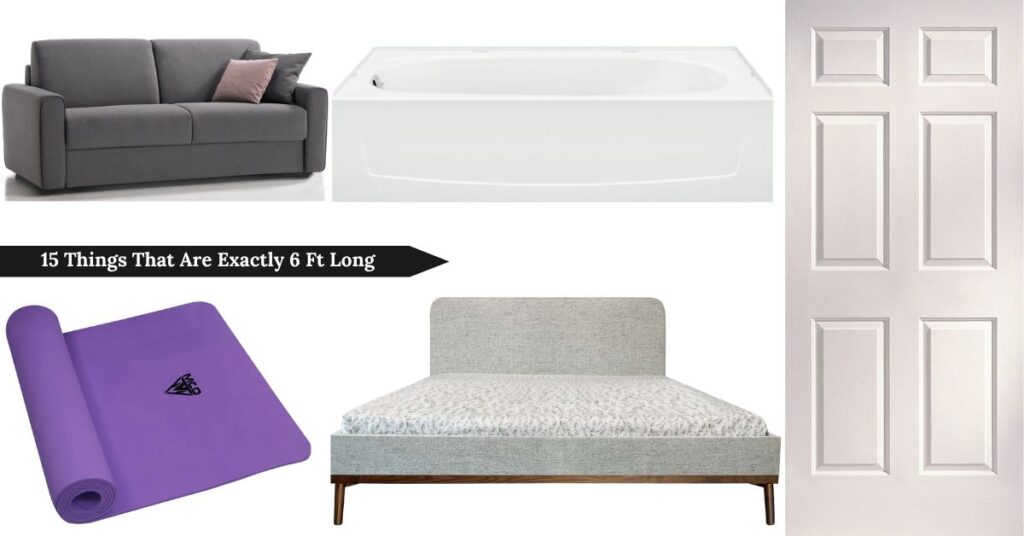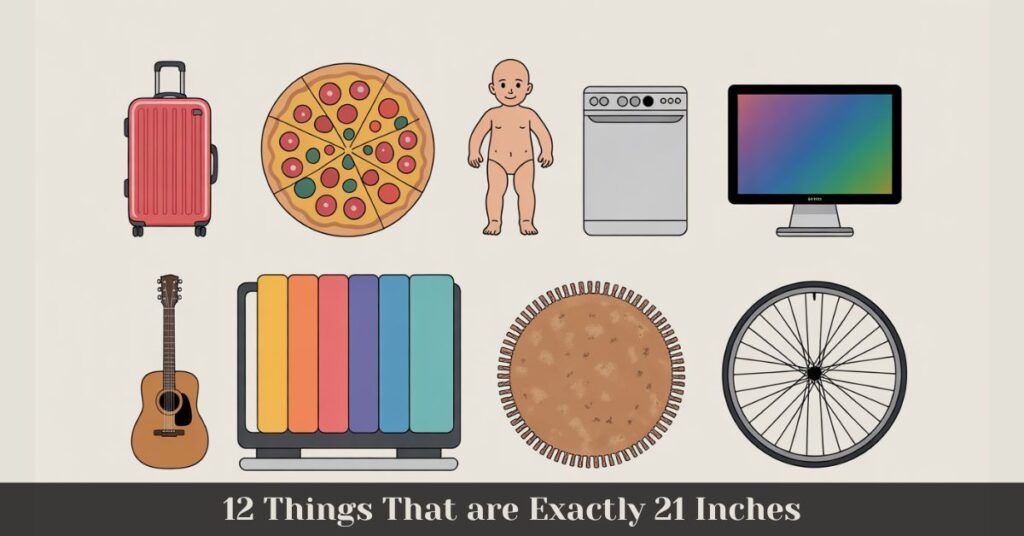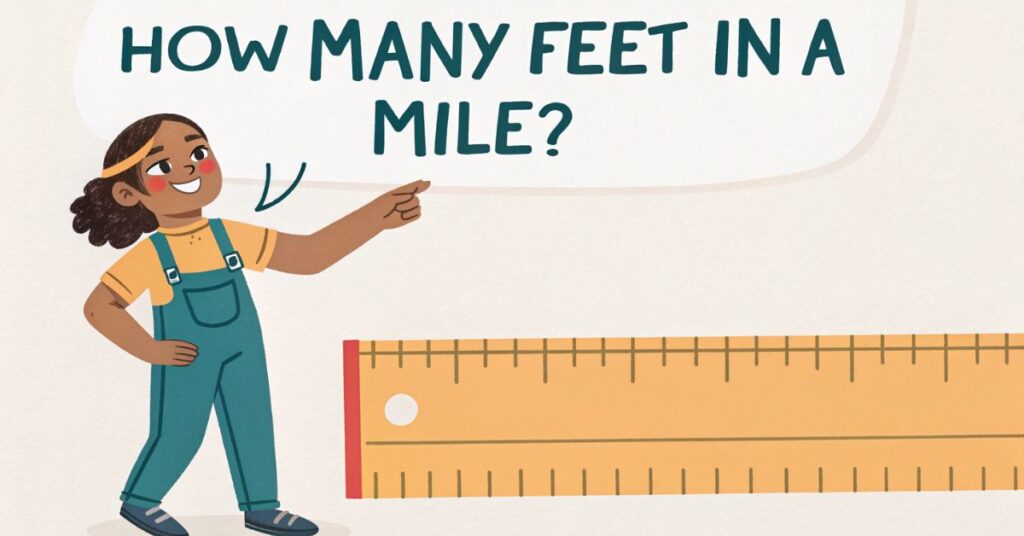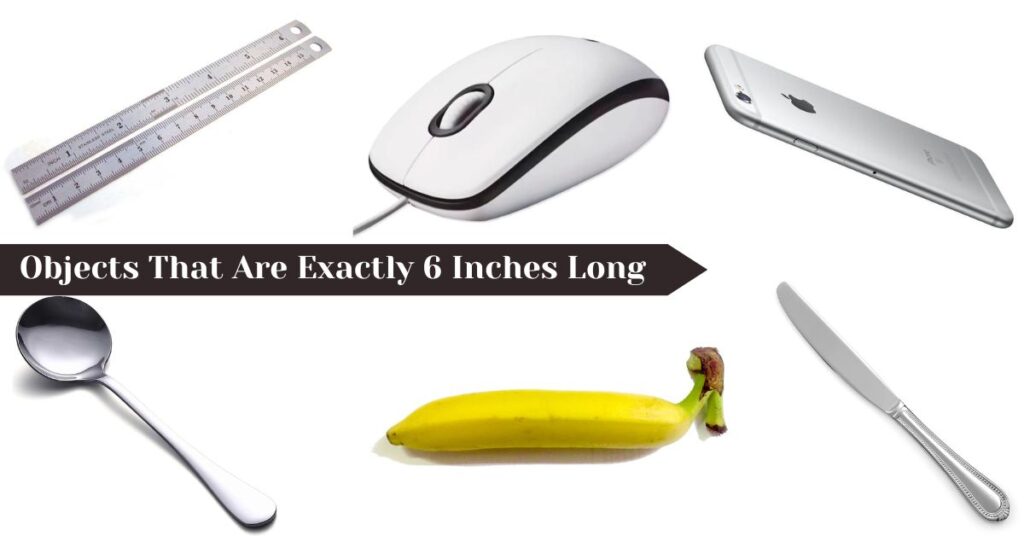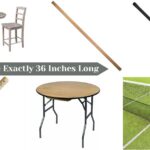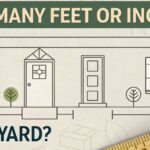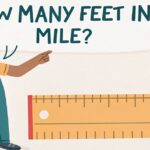Picture this: You’re standing in Home Depot with a measuring tape, trying to figure out how much flooring you need.
The sales associate asks, “How many yards do you need?” and suddenly your brain freezes. You measured everything in feet, but now you’re staring at yard measurements on the price tags.
Visual Chart
| Measurement | Conversion | Example |
|---|---|---|
| 1 yard | 3 feet | Baseball bat length |
| 1 yard | 36 inches | Standard fabric cut |
| 1/2 yard | 18 inches | Pillow fabric |
| 1/4 yard | 9 inches | Binding strips |
2 feet deep + 1 foot = 1 YARD
6’8″ = 2.22 YARDS
34 inches ≈ 1 YARD
9 feet = 3 YARDS
10×12 room = 13.33 square yards carpet
Curtain panels = 2-3 YARDS each
Swimming pool = 25 YARDS length
| Yards | Feet | Inches | Meters | Common Use |
|---|---|---|---|---|
| 0.25 | 0.75 | 9 | 0.23 | Quilt binding |
| 0.5 | 1.5 | 18 | 0.46 | Pillow covers |
| 1 | 3 | 36 | 0.91 | Standard fabric cut |
| 2 | 6 | 72 | 1.83 | Curtain panels |
| 5 | 15 | 180 | 4.57 | Upholstery projects |
| 100 | 300 | 3,600 | 91.44 | Football field |
The Lightning-Fast Answer
1 yard = 3 feet = 36 inches
That’s it. Simple, straightforward, and mathematically perfect.
Think of a football field goal post. The distance between the uprights? Exactly 18.5 feet, which equals about 6.17 yards. But here’s a better memory trick: picture three average-sized steps. That’s roughly one yard.
Quick Reference Chart
| Measurement | Conversion |
| 1 yard | 3 feet |
| 1 yard | 36 inches |
| 1/2 yard | 18 inches |
| 1/4 yard | 9 inches |
| 1/3 yard | 12 inches |
Feet to Fractions
The Foot Connection
Here’s where things get interesting. The yard-to-feet relationship isn’t random.
Medieval merchants needed a standard measurement for cloth. They discovered that three human feet lined up created a consistent, practical length. This became the foundation of our modern measurement system.
In construction, contractors still rely on this 3-foot increment. Standard drywall sheets measure 4 feet wide, but ceiling heights often work in yard-based calculations. A 9-foot ceiling? That’s exactly 3 yards tall.
Pro tip: When measuring rooms, think in yard increments first. A 12-foot room equals 4 yards. A 15-foot hallway measures 5 yards. This mental shortcut prevents costly measurement errors.
Inch-Perfect Precision
Mathematics makes this conversion bulletproof: 12 inches per foot × 3 feet = 36 inches per yard.
Fabric stores use this measurement religiously. When you buy one yard of fabric, you’re getting a piece that’s 36 inches long by whatever width the bolt offers (typically 45, 60, or 108 inches wide).
Quilters have mastered fractional yard calculations:
- Fat quarter: 18 × 22 inches (roughly 1/4 yard with different proportions)
- Half yard: 18 × width of fabric
- Quarter yard: 9 × width of fabric
Measuring tape technique: Most quality measuring tapes have yard markers every 36 inches. Look for the small diamond or special marking—that’s your yard indicator.
Visual Learning
Understanding yard measurements becomes easier when you connect them to familiar objects.
A standard kitchen counter measures about 2 feet deep. Add another foot, and you’ve got one yard. Most interior doors stand 6 feet 8 inches tall—that’s 2.22 yards of height.
Here’s a visualization trick that works: stretch your arms wide. Most adults span roughly 5 to 6 feet from fingertip to fingertip. That’s about 1.5 to 2 yards.
Baseball diamonds offer perfect yard references. The distance between bases? 30 yards exactly. From home plate to second base measures 42.4 yards. These measurements help athletes visualize distances during training.
Memory anchor: A regulation pool table measures 9 feet long. That’s exactly 3 yards of green felt.
Real-World Applications
Home Improvement Heroes
Flooring calculations separate amateur DIYers from seasoned pros.
Carpet stores sell by square yards, not square feet. A 10×12 foot room contains 120 square feet, which equals 13.33 square yards. Always round up when purchasing materials.
Landscaping projects demand yard precision. Mulch companies deliver in cubic yards. One cubic yard covers approximately 100 square feet at 3-inch depth. For a 300 square foot garden bed, you’ll need 3 cubic yards of mulch.
Fencing calculations trip up many homeowners. If your property line measures 150 feet, that translates to 50 yards of fencing material. Add 10% extra for gates, corners, and waste.
Crafting and Sewing Mastery
Fabric purchasing requires yard fluency.
Upholstery projects demand precision. A standard sofa needs about 8 to 12 yards of fabric, depending on pattern matching and fabric width. Curtain panels typically require 2 to 3 yards per panel for standard 8-foot ceilings.
Pattern layout maximizes fabric efficiency. Professional seamstresses arrange pattern pieces to minimize waste. Understanding fractional yards prevents costly fabric shortages mid-project.
Quilting calculations become mathematical puzzles. A queen-size quilt backing needs approximately 8 yards of 45-inch wide fabric, or 5 yards of 108-inch wide fabric.
Sports and Recreation
Football field dimensions provide excellent yard references.
The playing field measures 100 yards from goal line to goal line. Add both end zones, and you get 120 total yards. Each hash mark represents one yard of distance.
Track and field events use yard measurements for certain competitions. The 100-yard dash (less common now) equals 300 feet exactly. High school football fields often double as track venues, creating yard-based reference points for athletes.
Swimming pools frequently measure in yards. A standard lap pool stretches 25 yards long. Olympic pools measure 50 meters, which equals approximately 54.7 yards.
Advanced Yard Mathematics
Fractional Yards Decoded
Half-yard calculations appear everywhere in practical applications.
1.5 yards equals 4.5 feet or 54 inches. This measurement appears frequently in fabric projects and garden planning. Many decorative fabrics sell in half-yard increments to accommodate smaller projects.
Quarter-yard precision matters for detail work. 0.25 yards equals 9 inches exactly. Quilters use this measurement for binding strips and accent pieces.
Third-yard segments create interesting proportions. 1/3 yard equals 12 inches precisely. This matches standard ruler length, making it easy to visualize.
Yards to Meters
International perspective requires metric conversion skills.
One yard equals 0.9144 meters exactly. This means yards are slightly shorter than meters. For quick estimates, treat 1 yard as 0.91 meters.
Global shopping often requires these conversions. European fabric patterns list measurements in meters. To convert: multiply yards by 0.9144 for precise meter equivalents.
Scientific applications demand exact conversions. Research papers, engineering specifications, and international standards use metric measurements exclusively.
The Fascinating Yard Origin Story
Medieval beginnings shaped our modern measurement system.
King Henry I of England allegedly defined the yard as the distance from his nose to his outstretched thumb. While historians debate this story’s accuracy, it illustrates how body-based measurements evolved into standardized systems.
Standardization evolution took centuries to complete. Different regions used varying yard lengths until international agreements created uniformity. The confusion caused trade disputes and construction failures.
Modern definition emerged in 1959 when English-speaking nations agreed on the international yard. This measurement equals exactly 0.9144 meters, creating perfect metric conversion possibilities.
Cultural significance explains why Americans resist metric conversion. Yards feel intuitive because they relate to human scale and familiar objects. Football fields, fabric bolts, and construction materials all use yard-based measurements.
Common Conversion Catastrophes
The Top 5 Measurement Mistakes
Mixing up feet and yards in construction causes expensive errors.
A contractor once ordered 300 yards of concrete instead of 300 feet. The delivery truck arrived with 900 feet worth of concrete—triple the needed amount. The mistake cost thousands in wasted materials and labor.
Fabric miscalculations ruin sewing projects frequently. Beginners often confuse linear yards with square yards. A project requiring 3 linear yards of 45-inch wide fabric needs different calculations than 3 square yards of material.
Landscaping errors create budget nightmares. Homeowners sometimes calculate square footage but order materials in cubic yards. Mulch, soil, and gravel sell by volume, not area.
Sports field confusion affects youth leagues nationwide. Parents measuring practice fields often miscalculate yard markers. A 40-yard dash becomes a 40-foot sprint, completely changing the athletic challenge.
Recipe scaling disasters occur when cooking for large groups. Converting measurements from cups to yards (for extremely large quantities) requires understanding liquid measurement conversions alongside length conversions.
Professional Tips from Industry Experts
Contractor insights prevent measurement mistakes.
Always double-check calculations using different methods. Convert yards to feet, then verify by converting feet to inches. Multiple calculation paths catch errors before they become costly mistakes.
Interior designer secrets maximize space efficiency. Measure rooms in both feet and yards during initial consultations. This dual approach helps clients visualize space and understand material requirements.
Landscaper wisdom emphasizes practical application. Calculate material needs in cubic yards for volume, square yards for area coverage, and linear yards for borders and edging.
Technology Tools
Recommended conversion apps streamline measurement tasks.
Convert Units (iOS/Android) handles complex conversions including fractional yards. The app works offline and saves calculation history for reference.
Measure apps use smartphone cameras to estimate yard distances. While not perfectly accurate, they provide quick approximations for planning purposes.
Construction Calculator Plus specializes in building measurements. It converts between yards, feet, inches, and metric units while handling fractions and decimals seamlessly.
Online calculators provide bookmarkable resources.
RapidTables.com offers comprehensive conversion tools with yard-specific calculators. The interface handles complex fractions and provides instant results.
Calculator.net features specialized tools for fabric calculations, landscaping measurements, and construction planning. Each calculator explains the mathematical process.
Smart device integration enables voice-activated conversions.
Ask Siri: “How many feet in 5 yards?” for instant answers. Google Assistant handles complex conversions like “Convert 2.5 yards to inches and centimeters.”
Alexa provides unit conversion skills that work hands-free during projects. This feature proves invaluable when your hands are dirty from gardening or construction work.
Conversion Tables
Yards to Everything
| Yards | Feet | Inches | Meters | Centimeters |
| 0.25 | 0.75 | 9 | 0.23 | 22.86 |
| 0.5 | 1.5 | 18 | 0.46 | 45.72 |
| 0.75 | 2.25 | 27 | 0.69 | 68.58 |
| 1 | 3 | 36 | 0.91 | 91.44 |
| 2 | 6 | 72 | 1.83 | 182.88 |
| 3 | 9 | 108 | 2.74 | 274.32 |
| 5 | 15 | 180 | 4.57 | 457.2 |
| 10 | 30 | 360 | 9.14 | 914.4 |
Reverse Conversions
| Feet | Yards | Remainder |
| 1 | 0.33 | 0 feet |
| 2 | 0.67 | 0 feet |
| 3 | 1 | 0 feet |
| 4 | 1.33 | 1 foot |
| 5 | 1.67 | 2 feet |
| 6 | 2 | 0 feet |
| 10 | 3.33 | 1 foot |
| 15 | 5 | 0 feet |
| Inches | Yards | Remainder |
| 12 | 0.33 | 0 inches |
| 24 | 0.67 | 0 inches |
| 36 | 1 | 0 inches |
| 48 | 1.33 | 12 inches |
| 60 | 1.67 | 24 inches |
| 72 | 2 | 0 inches |
FAQ’s
Is a yard exactly 3 feet?
Yes, one yard equals exactly 3 feet by international definition. This standardization occurred in 1959 when English-speaking nations agreed on precise measurements. The relationship remains constant worldwide, making conversions reliable for any application from construction to crafting.
How big is 1 yard of fabric?
One yard of fabric measures 36 inches long by the width of the fabric bolt. Common widths include 45 inches (quilting cotton), 60 inches (apparel fabrics), and 108 inches (backing fabrics). The total square footage varies: 45-inch wide fabric yields 11.25 square feet per yard.
How many yards makes 1 mile?
1,760 yards equal one mile exactly. This conversion helps runners and walkers understand distances. A quarter-mile track measures 440 yards around. Marathon runners cover 46,112 yards (26.2 miles × 1,760 yards per mile) during their race.
How many inches makes a yard?
36 inches make one yard precisely. This equals 3 feet × 12 inches per foot. Quilters and sewists use this measurement constantly. Fat quarters measure 18 × 22 inches, while true quarter-yards measure 9 × fabric width (usually 45 inches).
Why is a yard called a yard?
The word “yard” comes from the Old English “gyrd,” meaning stick or rod. Medieval merchants used measuring sticks called “yard sticks” to measure cloth. The term evolved as the measurement became standardized. Other cultures use different names for similar measurements.
How much is a yard of mulch?
A cubic yard of mulch covers approximately 100 square feet at 3-inch depth. Most landscape supply companies sell mulch by the cubic yard (3 feet × 3 feet × 3 feet = 27 cubic feet). For reference, one cubic yard fills about 13.5 standard wheelbarrows.

Welcome to Swiftnis.com! I manage this site to provide accurate and easy-to-understand measurement guides. My goal is to make measurements simple for everyone. Whether you need Conversions, Tools, or Tips, I’m here to help. Enjoy exploring and measuring with confidence!
